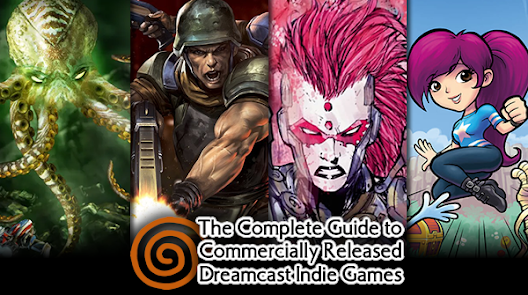Game Entries
Each of the 20 games submitted to Dream Disc '24 is unique, with an eclectic mixture of gameplay, graphical styles, and game engines on offer — there's something here for everyone to enjoy.
While compatibility can vary, you should be able to burn all of these games onto a CD-R, stick them on an ODE (i.e. GDEMU, MODE), or play them on an emulator like Flycast.
A-Blaster by PrOfUnD Darkness
Mashing up ideas from classic space shooters Astro Blaster (Gremlin/Sega) and Megamania (Activision), A-Blaster is the first of many entries that will be challenging your dexterity. You get a single life to shoot down nine single-screen levels’ worth of alien invaders, as they move quickly across the top of the screen. To help overcome their barrage and be within a chance of staying in the game, you have a “warp” ability at your disposal (a feature made famous by Astro Blaster), which slows down enemy movements and lasers for a few seconds.
Beach Box by PsyOp Studios
A complete remake of a Summer Jam 2024 entry, Beach Box is the first of two submissions to Dream Disc '24 by jam organiser Cypress, aka PsyOp Studios. This summery romp may be made up of simple shapes, but its gameplay is addictive. Taking control of a little square, the aim is to dodge larger rectangles by jumping or shifting dimensions, collecting coins as you go. It's sort of like Flappy Bird, except if Flappy Bird was actually fun. You also don’t have to give yourself carpal tunnel to play it.
It's a nice touch to see such a simple game have such a surprising range of unlockable power-ups and characters. I'm still trying to collect enough coins to get the little sock dude, Murph.
Big Drill is what trendy internet pundits would call an "idle" game (wait, does that make me one of them?), in which you are in charge of a... big drill. It does what it says on the tin, really.
Basically, the 3D blocks on screen are mined away automatically, with your resource numbers —which are listed on the right-side of the screen— increasing as you go. When your resources total specific amounts, it's time to take charge and buy upgrades for your drill. Upgrades include speeding up the drill, making it more durable, and increasing the amount of resources it collects. Pick the correct upgrades at the best time to see how deep you can drill.
For those looking to challenge themselves further, there is also a "prestige mode" to unlock, which resets any current progress and starts you again at a higher difficulty.
Keep your eye out for a video detailing Big Drill's development coming to captkuso's YouTube channel in the next couple of weeks.



















.png)








.png)






















